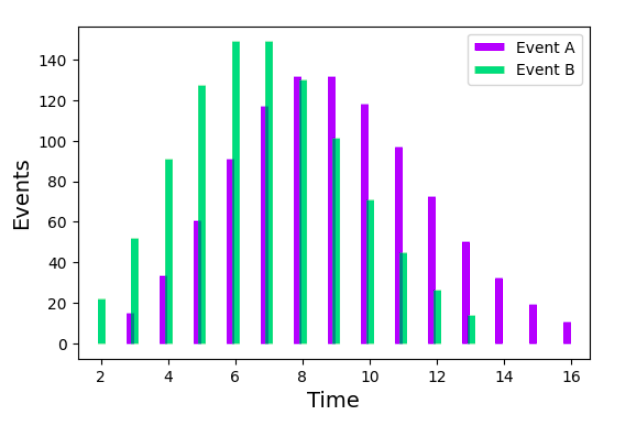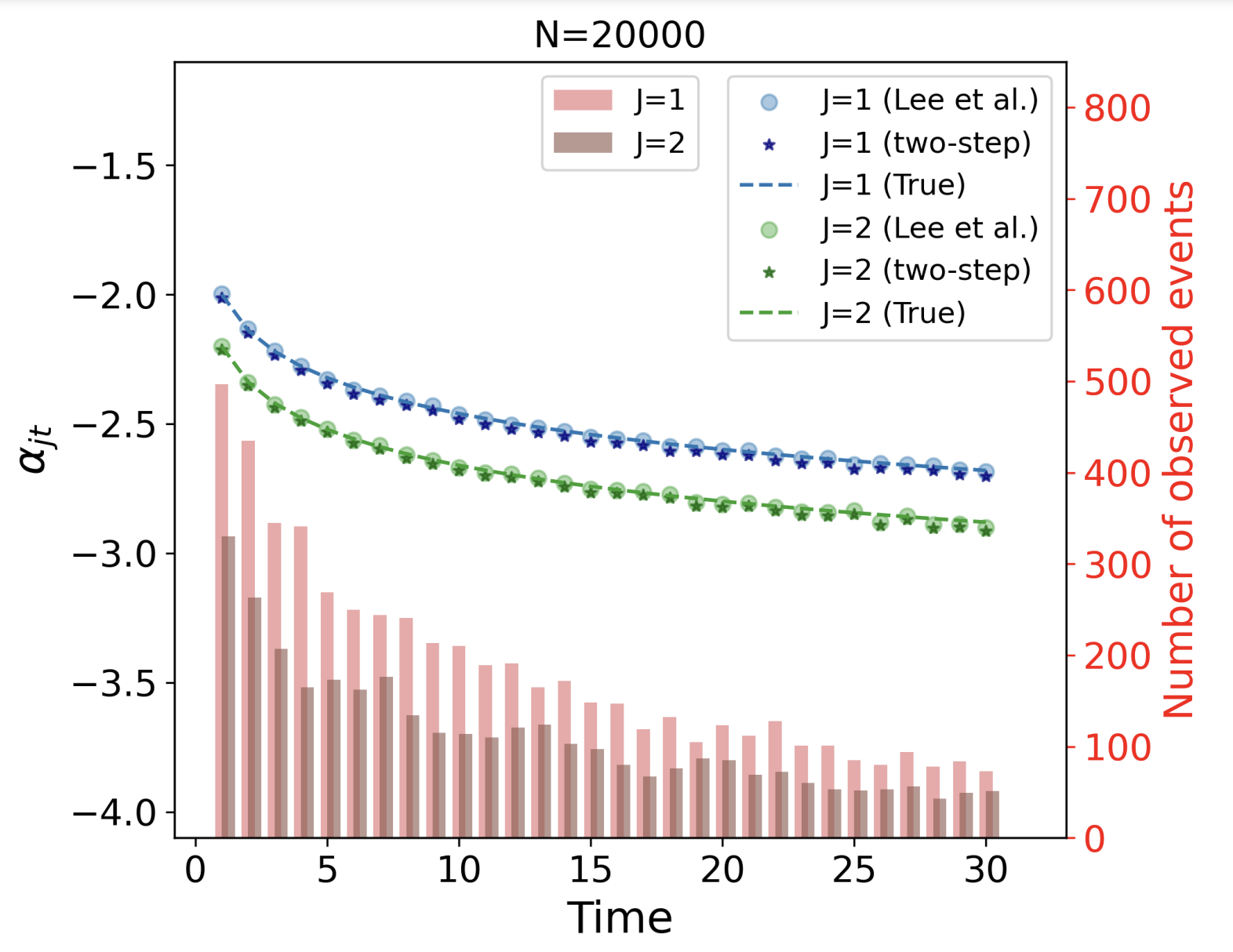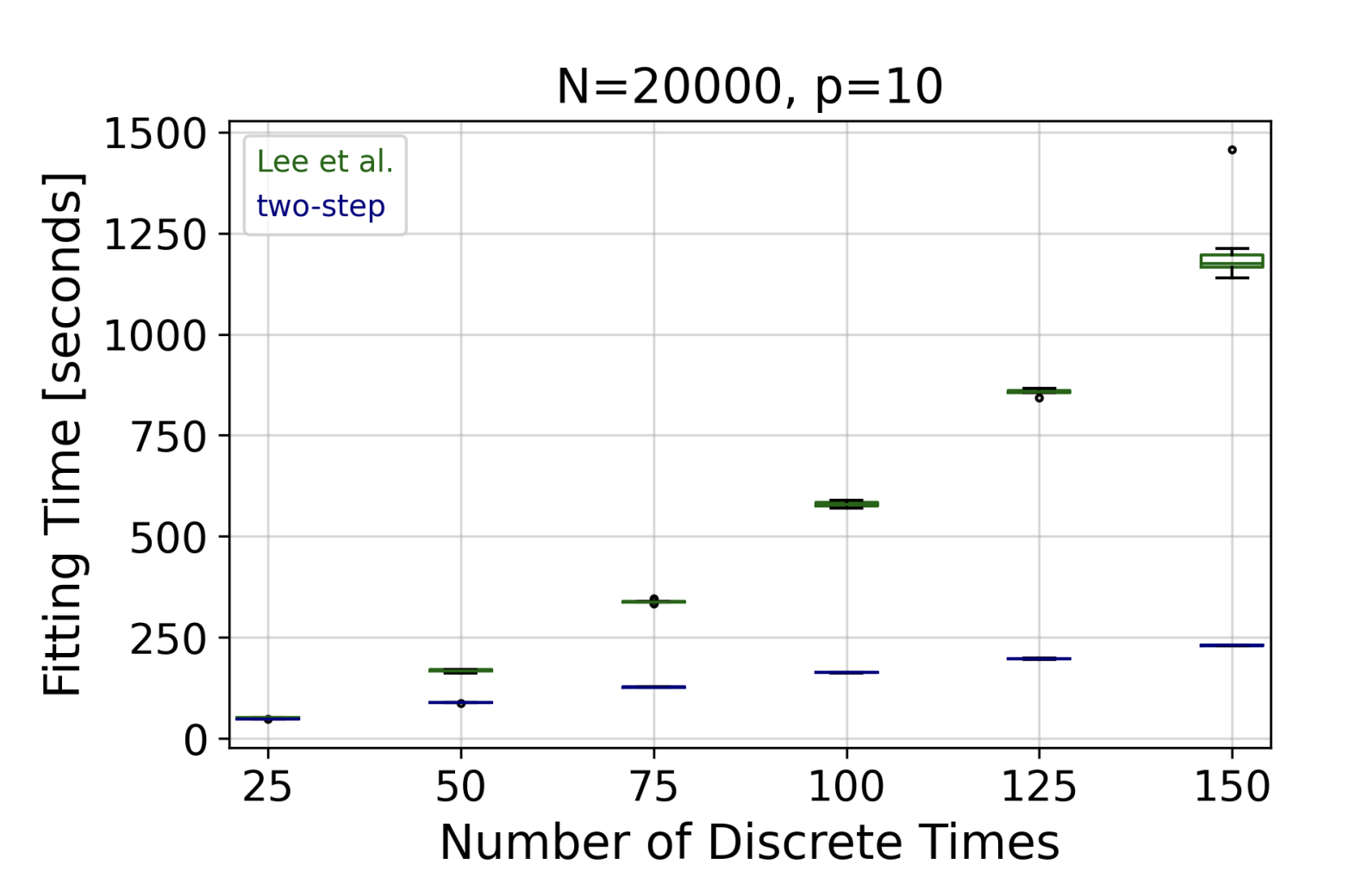Discrete-time Survival Analysis with Competing Risks
Time-to-event analysis (survival analysis) is used when the outcome of interest is the time until a pre-specified event occurs. Sometimes, the event can be one of several distinct event types, known as competing risks (events).

Figure 1. Number of observed events in each discrete-time for two competing events
In this project, we developed a novel estimation procedure for analyzing discrete-time survival data with competing events.
The proposed approach offers two key advantages over existing procedures:
- It accelerates the estimation process.
- It allows for straightforward integration and application of widely used regularized regression and screening methods.
In our work, Discrete-time Competing-Risks Regression with or without Penalization (Meir and Gorfine, 2023) we illustrate the benefits of our proposed approach by conducting a comprehensive simulation study. Additionally, we showcase the utility of our procedure by estimating a survival model for the length of stay of patients hospitalized in the intensive care unit, considering three competing events: discharge to home, transfer to another medical facility, and in-hospital death.
In addition, we present PyDTS, an open-source Python package for discrete-time survival analysis with competing risks. We present PyDTS along with usage examples in PyDTS: A Python Package for Discrete-Time Survival (Regularized) Regression with Competing Risks (Meir et al. 2022)
Key Contributions
- The proposed approach performs well in terms of empirical bias and coverage rates.
- It is significantly faster than existing methods
- It allows including modern machine-learning model-selection procedures, such as regularization and screening.
- PyDTS, an open-source Python package for discrete-time survival analysis with competing events.

Figure 2. Simulation results - comparison of performance between the proposed two-step approach and the one of (Lee et al., 2018)

Figure 3. Simulation results - comparison of fitting time between the proposed two-step approach and the one of (Lee et al., 2018)
